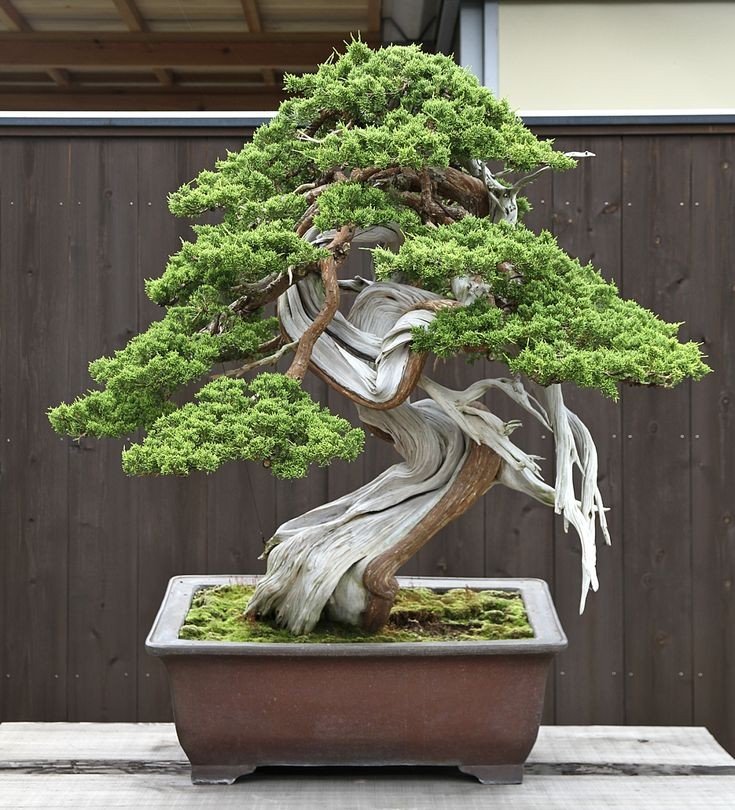“Many people wonder how to shape or style their Bonsai tree trunk. The trunk’s shape is crucial for the overall appearance of a Bonsai tree. With the right training and research, you can create a stunning and unique trunk for your Bonsai tree, making it a real eye-catcher and statement piece.”
“In this article, we’ll cover all you need to know about your Bonsai tree’s trunk. We’ll explain the proper and safe way to shape it and discuss various stylistic choices. Additionally, we’ll mention the tools you might require for the task. Whether you’re new to Bonsai care or just looking to expand your knowledge, read on to discover how to create the Bonsai tree of your dreams with care and precision!”
Table of Contents
What to Consider When Shaping Your Bonsai Tree’s Trunk

“It’s not only the foliage and flowers of your Bonsai tree that require special shaping and care. Shaping the trunk of your Bonsai tree is almost as achievable as working on its branches. But before you embark on this patient and intricate process, there are some important considerations. You should take into account factors like the tree’s style, thickness, and surface roots.”
Trunk Shape and Style
“Various Bonsai tree styles and shapes are available for consideration. When selecting a trunk shape or style, it’s crucial to consider the species of your tree, as some are more amenable to shaping than others. For instance, shaping redwood Bonsai trees can be challenging due to their sturdy wood and extensive growth tendencies. On the other hand, Ficus Bonsai trees are easier to work with and grow more rapidly, offering more flexibility in design adjustments.”
“No matter the Bonsai tree species you have, shaping becomes increasingly challenging as the trunk thickens. Once the trunk reaches a certain thickness, it’s unlikely you’ll be able to alter its curvature and style significantly. This underscores the importance of selecting a young Bonsai tree specimen and focusing on shaping and styling during its early stages.”
“If you already have a specific Bonsai tree style in mind, great! If you’re unsure, take a look at our Bonsai tree styling guide, which is listed below for your reference.”
Trunk Thickness

“The choice of Bonsai tree species significantly influences trunk thickness. Birch or aspen trees tend to have narrower trunks, while oak or elm trees can develop thicker ones. Nevertheless, creating an impactful trunk often requires achieving both thickness and taper.”
“Tapering is a crucial aspect of a healthy Bonsai tree. Most Bonsai trees exhibit a thicker base that tapers as it ascends, mirroring natural growth patterns, which is essential for proper cultivation.”
Structure of the Nebari, or Surface Roots
“Certain Bonsai tree species are well-suited for nurturing surface roots, known as Nebari, which enhance the tree’s natural appearance and structure. This feature reinforces the concept of cultivating a miniature tree in a container, mirroring how trees in nature often develop surface roots.”
“Incorporating surface and aerial roots is a seamless process in certain Bonsai tree styles and species. Emphasizing these surface roots can harmonize the overall appearance of your tree, balancing the look of branches and foliage. Considering Nebari during styling often results in a more cohesive and well-balanced Bonsai tree.”
Tips for Shaping Your Bonsai Tree Trunk

Achieving your desired Bonsai tree trunk shape requires patience and precise timing. Timing is crucial in various aspects of Bonsai care, from defoliation to repotting. Shaping the trunk also demands impeccable seasonal timing, so keep this in mind if you’re eager to see your design come to life.
Choose Your Bonsai Tree Carefully
Selecting a young Bonsai tree specimen is crucial since the trunk forms the core of your tree’s design. Pay attention to the trunk’s characteristics when choosing. If you notice uneven knots or an irregular taper in baby Bonsai trees, consider another option. Attempting to shape a thick trunk, even with a bending device, can be extremely challenging, so avoid starting with an overly developed Bonsai tree.
Trunk-bending tools can be valuable for shaping young Bonsai tree trunks to achieve your desired look. If precision and control are important to you in achieving your Bonsai’s ideal appearance, these tools can be a useful option.
Thinning the Trunk isn’t Possible
You’re right, thinning a Bonsai tree’s trunk isn’t possible, as it can harm the tree’s health. Instead, you can focus on shaping the trunk using deadwood and other design elements to create the desired appearance. Encouraging specific sections of the tree to thicken can help achieve a more balanced look without compromising the tree’s well-being.
But You Can Thicken Your Trunk!
Encouraging select branches to grow to redirect energy and thicken the trunk is a valid approach in Bonsai cultivation. It’s important to understand that this method involves growing branches with the intention of later removing them. This patient approach can take years before you can achieve the desired trunk thickness and shape while maintaining a healthy Bonsai tree.

Consider the Taper of Your Bonsai Tree Trunk
Achieving a tapered trunk is indeed a key to enhancing the aesthetics of a Bonsai tree. Redirecting the tree’s energy, planting it in a spacious container, and allowing it to grow can be an effective strategy for developing a thick and tapered trunk over time. While it requires patience, this method can help establish the desired tapered trunk for your Bonsai tree.
Take Your Time
As previously mentioned, your Bonsai tree will need years before it can develop a beautiful and structured trunk. You may need to leave your specimen alone during this time, unpruned and unstyled. While this may be disappointing, Bonsai tree cultivation is all in the timing, including how long you should wait before shaping your tree. With practice and patience, you can cultivate a trunk that mimics nature, no matter what style you are hoping for!


Really helpful 👍